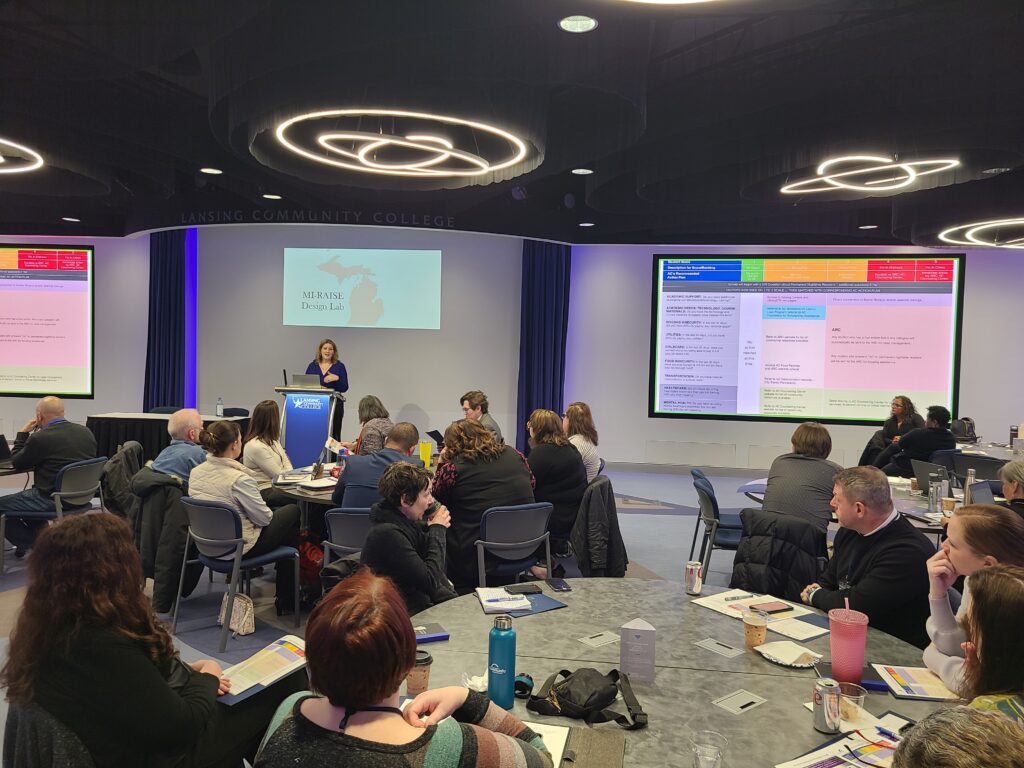Nearly 60 years have passed since Martin Luther King Jr. declared “I Have a Dream” from the steps of the Lincoln Memorial on April 28, 1963. As we commemorate King’s birthday today, it’s a good time to assess our progress toward his dream of equitable access to “the great vaults of opportunity of this nation.”
What we find is that dream remains too far out of reach for too many people. This is not a matter of opinion. It is documented by hard economic data.
It is true nationally, with a Black-White income gap that has held steady for at least half a century. It is true in Michigan, where Black per-capita income of $22,963 was roughly half of White income of $45,175 in 2021. And it is true here in West Michigan, where the 11.5% unemployment rate for Black residents almost tripled the 4.1% rate for White residents in 2021.
All of us pay the price for these disparities in lower productivity, restrained economic activity, diminished quality of life – and lost opportunity.
A Priority for Employers
The member CEOs of TalentFirst understand this. They have been clear in their support for Diversity & Inclusion as a critical component of making West Michigan a top region for talent. They know that beyond the moral case, there is a proven business case for being D&I champions. They know that to succeed, it is imperative to attract diverse talent to inclusive workplaces.
This is why D&I is one of our core priorities. It’s also why Racial and Ethnic Gaps are among the four key performance indicators TalentFirst uses to track our progress toward becoming a top 20% region for talent.
Since its founding as a data-driven organization, TalentFirst has measured our region’s performance against peer regions and nationally. When you aggregate those measures, West Michigan now ranks in the top 22% of communities nationwide.
Our current rank of 39 out of 175 combined statistical areas reflects an improvement of 10.8 places since the beginning of TalentFirst in 2010 – outpacing the improvement of the 11 other CSAs we have identified as peer regions around the country (PDF).
However, the assessment is not as positive when reviewing the individual measures that make up that total.
Where We Need To Improve
We are advancing in Postsecondary Attainment (63.3%, third among peer regions), and reducing the Poverty Rate (10.4%, third among peers). Like the rest of the nation, we are struggling with a declining Labor Force Participation Rate (65.7%), yet we rank first among our peers in this measure.
The biggest area for improvement is in the fourth measure: Racial/Ethnic Gaps, where we rank 113th nationally and 11th out of 12 peer regions. The data behind that score shows we have a lot of work to do, with the biggest gaps between Black and White residents of West Michigan.
The 2021 data for West Michigan shows:
- A labor force participation rate of 60.7% for Black residents compared to 65.4% for White residents (a 4.7 percentage-point gap)
- An unemployment rate of 11.5% for Black residents compared to 4.1% for White residents (a 7.4 percentage-point gap)
- Per capita income of $18,810 for Black residents compared to $37,503 for White residents (a $17,693 gap)
Closing Gaps, Pursuing Dreams
Closing those gaps begins with recognizing them and the harm they cause our entire region.
Nearly 100 West Michigan CEOs are leading this effort by signing the TalentFirst Diversity & Inclusion Commitment. Many also have contributed their insights to PIVOT, our online D&I toolkit.
This month also marks the beginning of our annual D&I Benchmarking Survey.
This is a useful tool for any organization, regardless of where it stands on the D&I journey. Participants receive confidential data to gain an understanding of their workforce’s demographics, as well as insight into strengths and opportunities to grow. The community benefits as we collect aggregate data to track our region’s progress.
These efforts pay off with very real results. Consider what would be possible just by closing the gaps in unemployment rates.
If all racial and ethnic groups in West Michigan faced the same unemployment rate as the regional average, we could fill thousands of job openings that currently go vacant, increasing the business contribution to our local economy. We would add hundreds of millions of dollars to our region’s combined annual income. And we would achieve our goal of making West Michigan a top 20 region for talent, where businesses and individuals alike can thrive.
That is a dream worth working toward.


